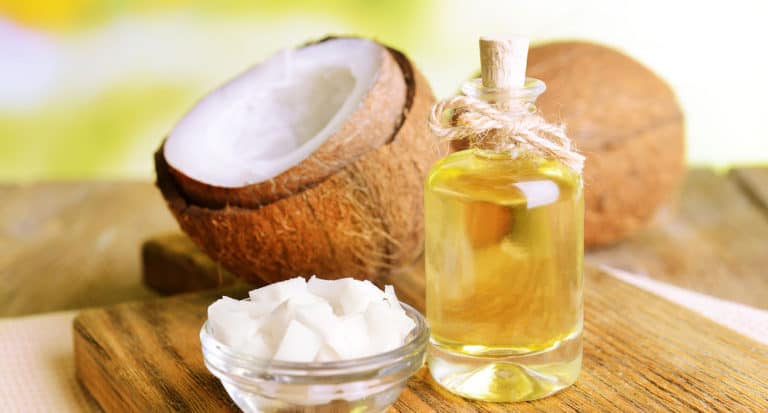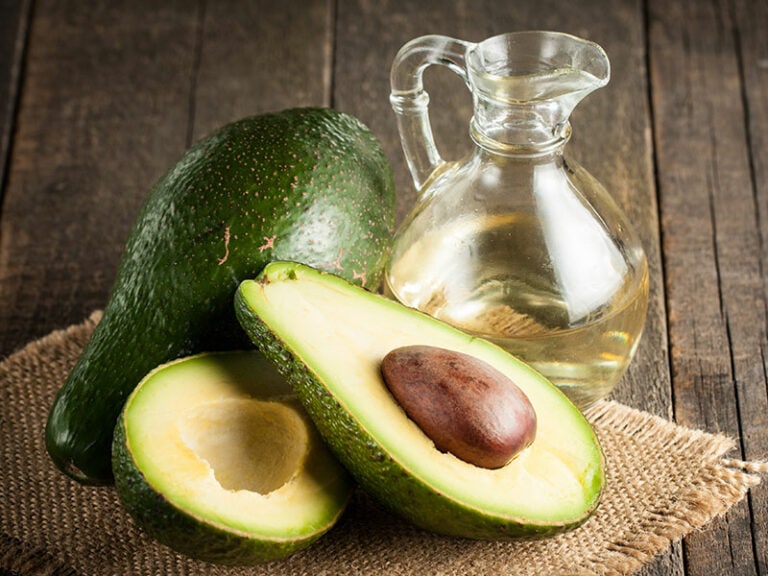Everyone needs to know what is salad oil and how to use this oil properly since you and I all want to enhance the bland taste of greens. I wrote this post to clear up all your questions!
Continue reading, and you will discover many types of salad oils. I will also share some valuable tips to intensify your salad taste just with a bit of oil. From now on, you don’t need to feel tired of eating dry and dull salad!
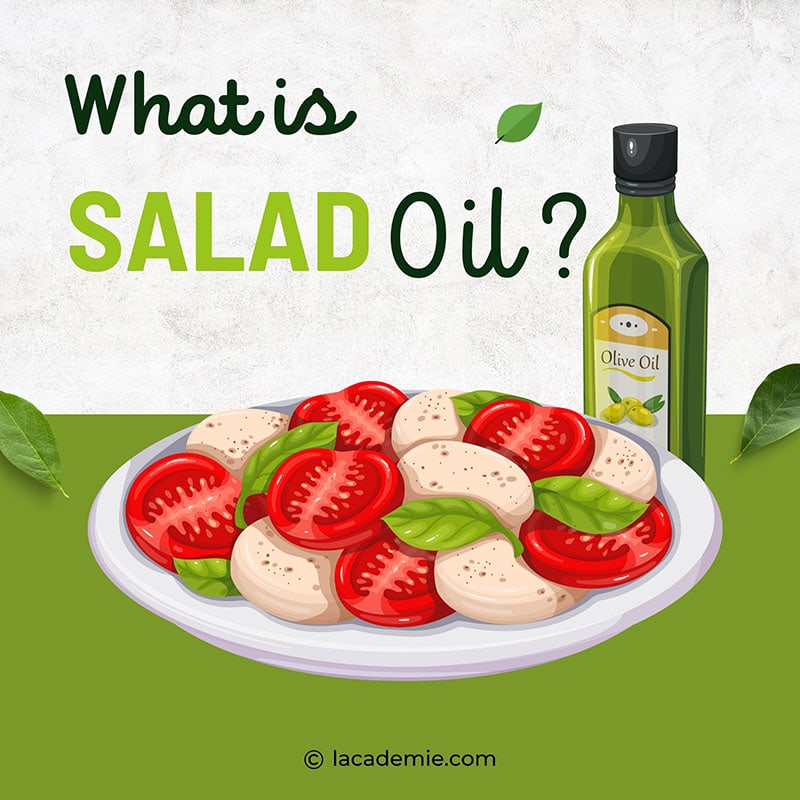
Definition of Salad Oil
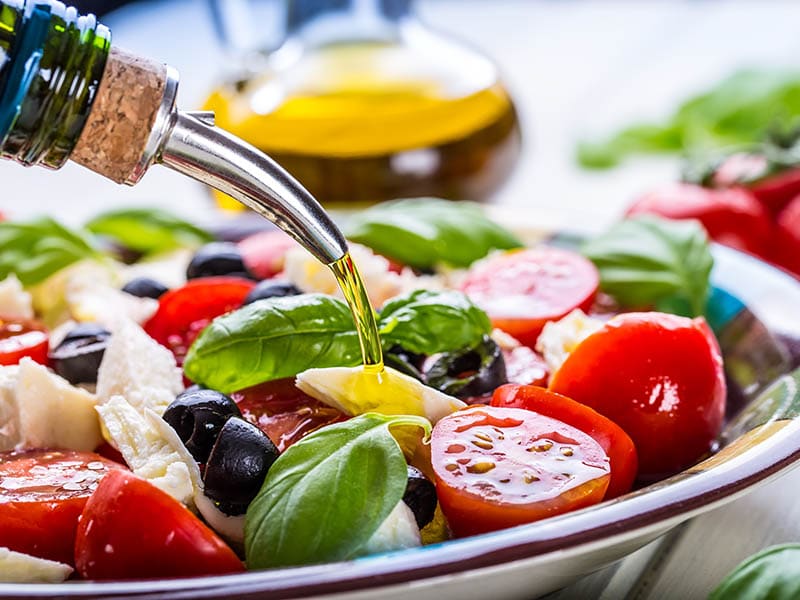
Salad oil is not a particular definition of any oil. This general term describes many types of oil with suitable characteristics for salad dressing. A standard salad oil must pass the AOCS Cold Test (min 5.5 hours).
Most light-tasting vegetable oil can be classified as salad oil. The oils that give so much flavor to your dish are not ideal. And to run smoothly when poured onto your salad, these oils must have an absolutely low viscosity, too.
These salad oils will add a pleasant taste to your bland veggies. They are a savior for plain old salads. As a particular characteristic, they are usually rich in monounsaturated fat, alpha-linolenic acid, and phytochemicals.
Types of Salad Oils
There are a lot of veggie oils that you can consider to enhance your salad’s taste. If you are not sure, refer right now to all kinds of salad oils that you can use to flavor up your recipe instantly!
1. Sunflower Oil
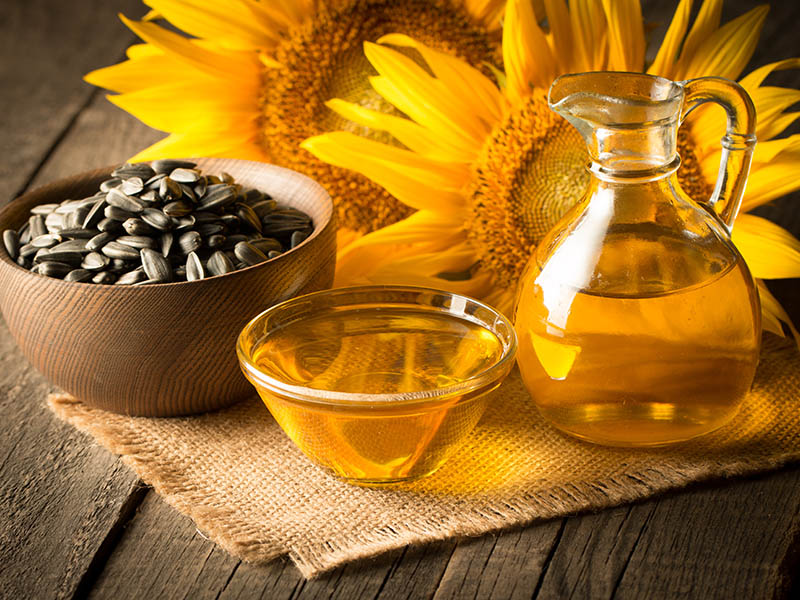
Sunflower oil has the faintest taste to contribute to your salad without changing its flavor. This is pressed from the sunflower seeds. The oil is lighter in color than other vegetable oils and has a mild fragrance.
Moreover, sunflower oil is also beneficial for heart health, thanks to its high content of unsaturated fats that help lower cholesterol levels in the body.
This oil has an extremely airy texture with a delicate flavor. It makes your salad better without being boring. You can choose cold-pressed sunflower oil to add more taste to your salad. To uphold the flavor, use sunflower oil for salads containing sunflower seeds.
Learn how to make a tasty lemon garlic dressing with sunflower oil!
2. Canola Oil

This is an edible oil extracted from rapeseed. Also, it is a vegetable oil used a lot in cooking. The oil has a light yellow color and contains many nutrients, good for health, especially the cardiovascular system.
This oil has a mild and neutral taste which is excellent when you do not want an extra flavor to your recipes. Therefore, canola oil is considered a good salad oil used in many sauces and some light frying. It is suitable for the weight loss process as well.
3. Safflower Oil
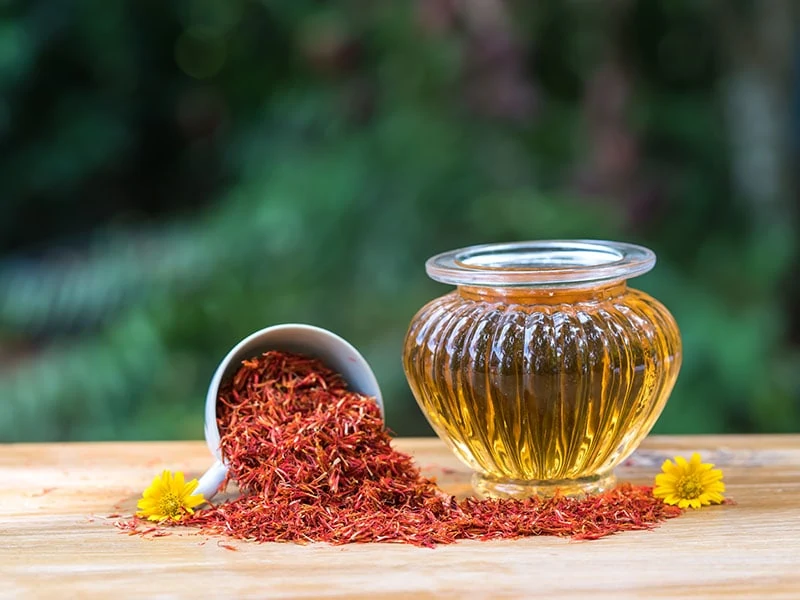
Safflower oil is extracted from the safflower tree, one of the oldest plants coming from ancient Egypt and Greece. To extract this oil, safflower seeds are crushed, pressed, or treated with chemical solvents.
This oil is suitable as a salad oil due to its mild and unobtrusive taste. Safflower oil will not add its own flavor to any dishes, from frying to sauteing and also salad dressing.
Moreover, safflower oil is rich in monounsaturated fats, omega-6 fatty acids, and vitamin E. Not only cooking but safflower oil is also used on the skin (1).
4. Soybean Oil
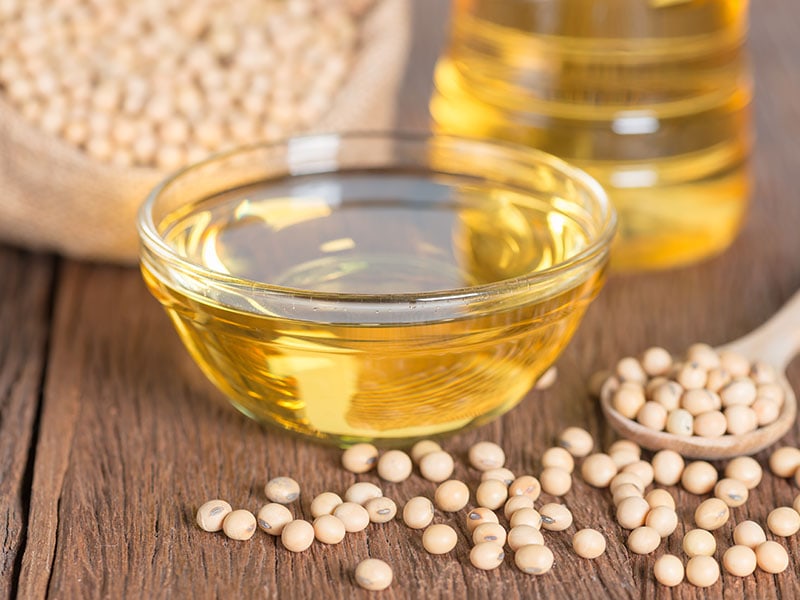
Soybean oil is extracted from soybean seeds by the refining method. This is a nutritious cooking oil with high protein and unsaturated fatty acid content. In addition, soybeans contain many other vitamins and minerals essential for the human body.
A good quality soybean oil can be served as salad oil. It should be light yellow with a mild, neutral taste right after the production process. After some storage time, the signature taste of soybean oil returns, and you can call it the reversion flavor.
This flavor is some kind of “green-beany”, and it will not affect the general taste of your salad. Soybean oil pairs exceptionally well with vinegar and salt and pepper to make a lot of toothsome salad dressing.
This chef will help you make your best version of soybean oil salad dressing!
5. Flaxseed Oil
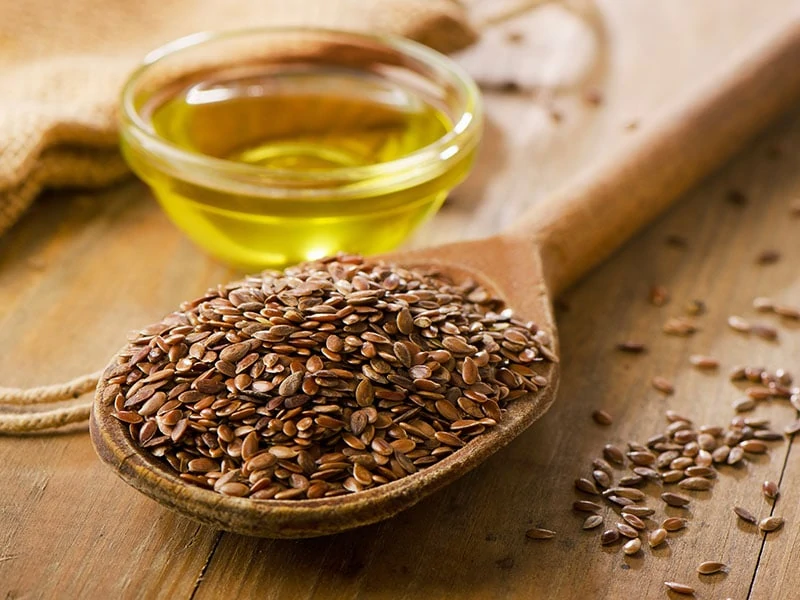
Flaxseed oil, also known as linseed oil, is ground and pressed from the seeds of the flax plant. This may be one of the oldest plants since it has been cultivated from the beginning of civilization. This oil contains many beneficial fatty acids for the body.
High-quality flaxseed oil is not bitter at all. Meanwhile, versatility is one of the advantages of flax oil, so using linseed oil is also quite diverse. It has a mild and nutty flavor for salad dressings, dips, sauces, and even smoothies or shakes. Flaxseed oil is also suitable for skin and hair care.
6. Corn Oil
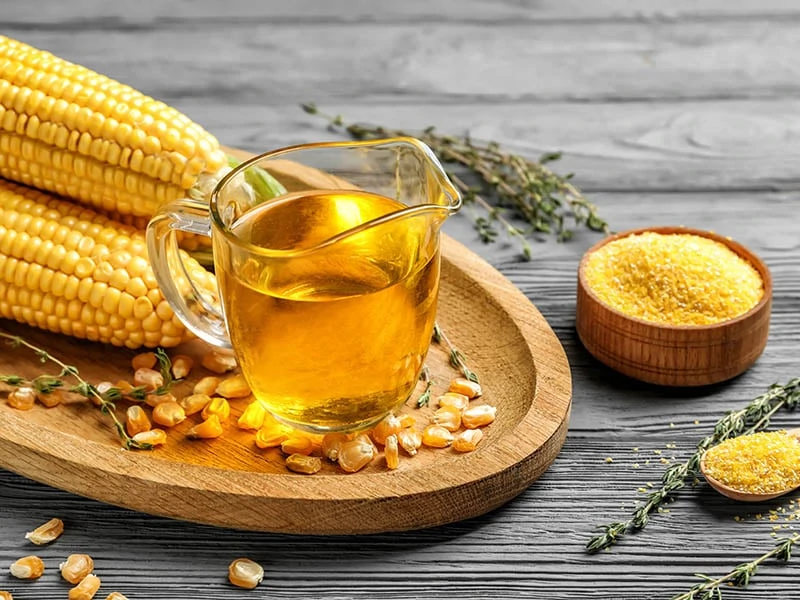
Corn oil is a familiar oil extracted from the germ of corn. Besides salad dressing, you can use it for frying, stir-frying, or cooking everyday dishes to enhance their taste. Thanks to its high heating point, corn oil is also a common alternative to peanut oil and other frying oils.
This type of salad oil tends to transmit a slightly roasted corn flavor. Although it may not be as mild as canola oil, the flavor is still neutral enough for salad dressing. The taste is also almost buttery for mayonnaise and great for baking.
7. Sesame Oil
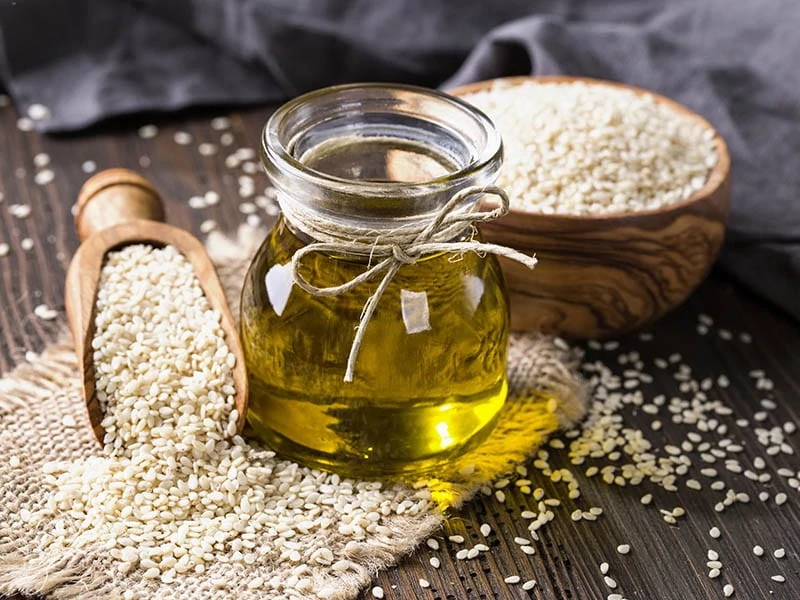
There are two types of sesame oil you should know: light sesame oil and toasted sesame oil. The light version is made from raw seeds with a highly mild flavor, aroma, and color. The light and neutral taste makes it an ideal salad oil or deep-frying.
On the other hand, roasted sesame oil is produced from roasted seeds. This kind of oil has a darker color and a thicker texture. With a distinctive richer roasted taste, roasted sesame oil can add a punch of flavor to your dishes.
No matter what your preference is, you should always opt for sesame oil with the finest quality. The best sesame oil is often pure, unrefined, and made from high-quality ingredients.
With the practical uses of sesame oil, you can combine it in your cooking process to increase food’s flavor and nutritional value. It is an excellent oil option for stir-frying, sautéing, vinaigrettes, and cold sauces. This is also the best skin care product for your skin.
8. Walnut Oil
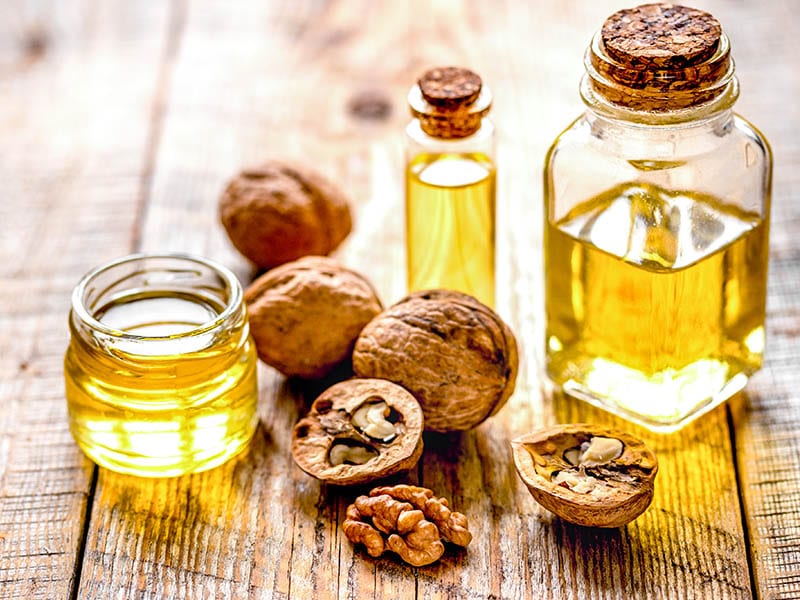
If you want to add some pleasant flavor to your bland salad, walnut oil can be a good choice. This oil has a delicate, nutty, and slightly woody flavor with a beautiful amber color contributing to your rich salad dressing.
People usually use walnut oil in vinaigrettes to improve their taste. Walnut oil also tastes refreshing on a cold sauce, making it a perfect replacement for sesame oil if you’re allergic to sesame. Besides, it has many rich nutrients beneficial for your health.
And nothing can be better than walnut oil added to a salad with walnuts! Some kale, apples, and blue cheese are also good partners. Besides salad, you should use this oil for dips, sauces, or uncooked dishes to prevent the flavor from turning bitter on heat.
You can add some walnut oil at the very end of some dishes like fish, meat, and pasta to create an excellent taste, too. In particular, walnut oil can bring out a deeper taste in aged cheese, dark leafy veggies, and squash.
9. Avocado Oil
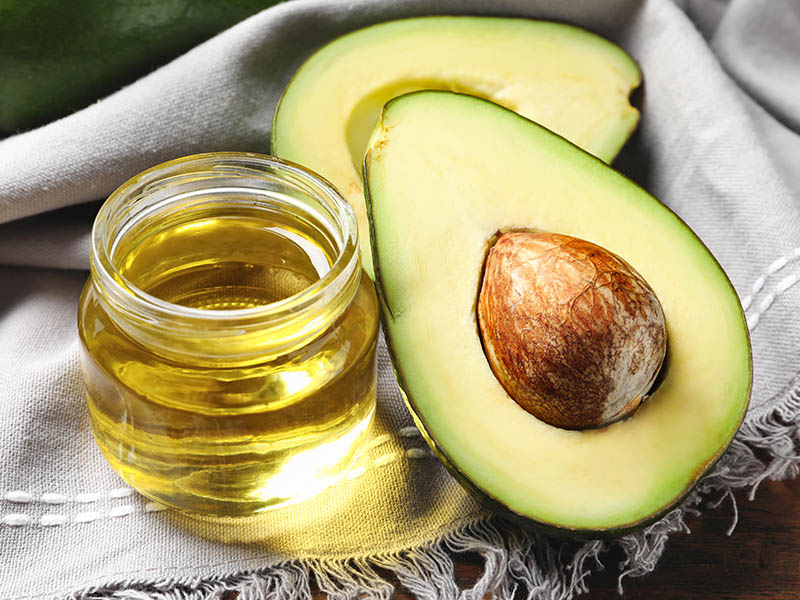
Why not add some top-notch avocado oil into your salads? The beneficial fat content in this oil will provide you with many health advantages. You may find it tastier than any other oil with the signature buttery taste of avocado but milder.
This oil has a smooth texture, with the taste lying between grassy and nutty. You can use avocado oil in any recipe that calls for salad oil, especially avocado salads.
In addition, avocado oil is rich in vitamins, especially vitamin E and other antioxidants, so this is an excellent ingredient to serve both health and beauty needs (2).
10. Extra Virgin Olive Oil
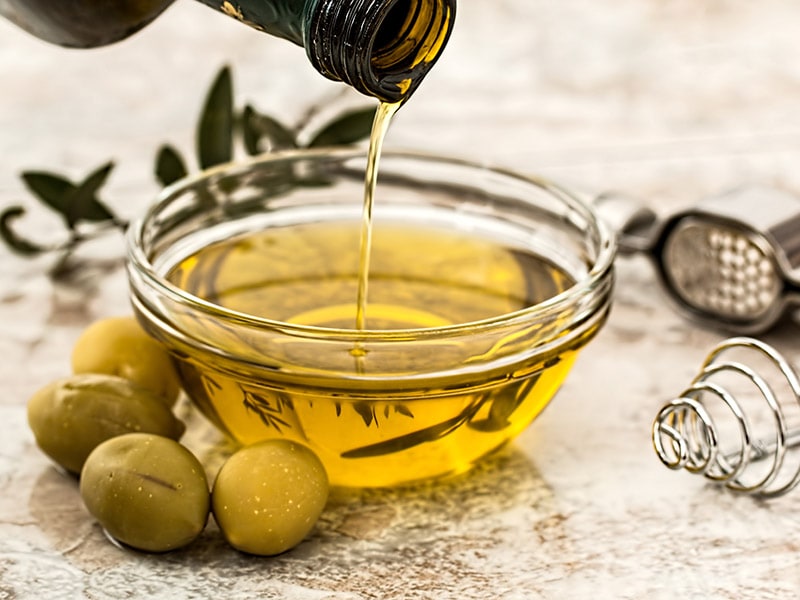
One of the most common salad oils is olive oil in the extra virgin form. Due to the non-treated condition, all the essential antioxidants and vitamins are preserved.
The taste of olive oil can range from delicate to complex. You can find this oil a bit bitter and peppery. Nevertheless, high extra virgin olive oil still contributes well to your bland salads with its signature fresh herb and fruity taste despite the unneutral taste.
For salad dressings, olive oil will be extra tasty when paired with a touch of lemonade, especially in a delicious and nutritious winter salad. However, not everyone will enjoy this distinct taste. Therefore, you can start with just a little bit and add more if needed.
Olive oil and lemonade will make the best salad dressing couple!
11. Peanut Oil
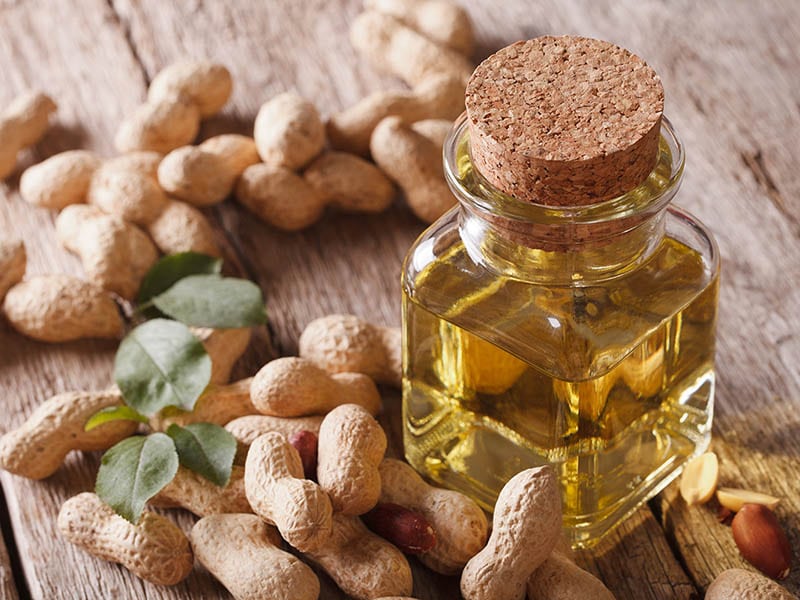
Peanut oil is made from peanuts, also known as Arachis oil. Because of its high smoking point, peanut oil is often used for frying foods. The oil has different flavors depending on the processing method, from light and sweet to bold and aromatic.
To serve it as a salad oil, you can use refined peanut oil. This kind of oil has been bleached and deodorized to remove allergenic components present in the oil. It is even safe for people with peanut allergies.
Due to the refined process, peanut oil has a mild and slightly nutty flavor. This kind of peanut oil is commonly used to make salad dressings and is excellent for baking.
12. Macadamia Oil
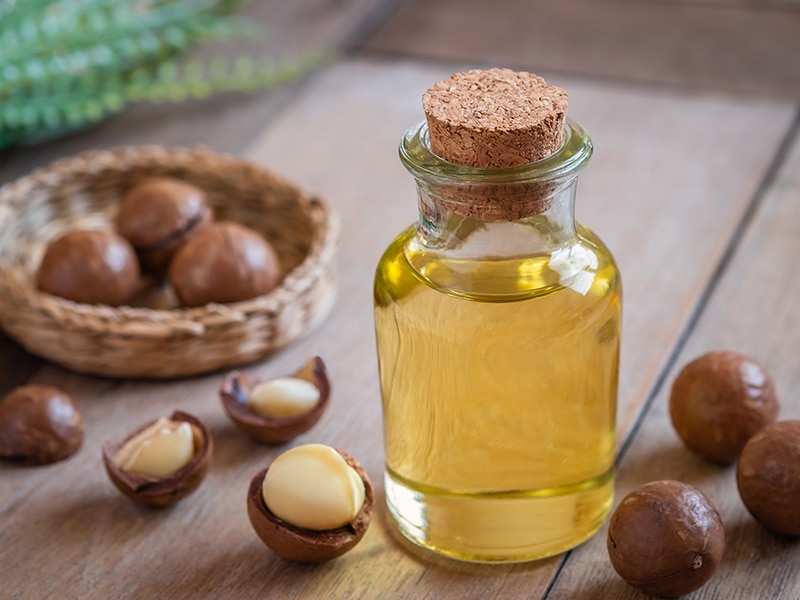
Indeed you will be familiar with using macadamia oil for salad dressing. This oil can add extra flavor to your boring salad without making it weird. Due to the high smoking point, you can also use this oil for baking and deep-frying.
The smooth buttery, nutty and creamy flavor of macadamia oil is unique to pair with any salad, particularly with some macadamia nuts added. This oil also brings you many benefits for health and has a lot of beauty uses for skin and hair.
Moreover, macadamia oil has a particularly high content of monounsaturated fatty acids, a great source for your heart health. This oil also has a stable condition thanks to the low polyunsaturated fat content, so you do not need to keep it fresh in your fridge.
13. Coconut Oil
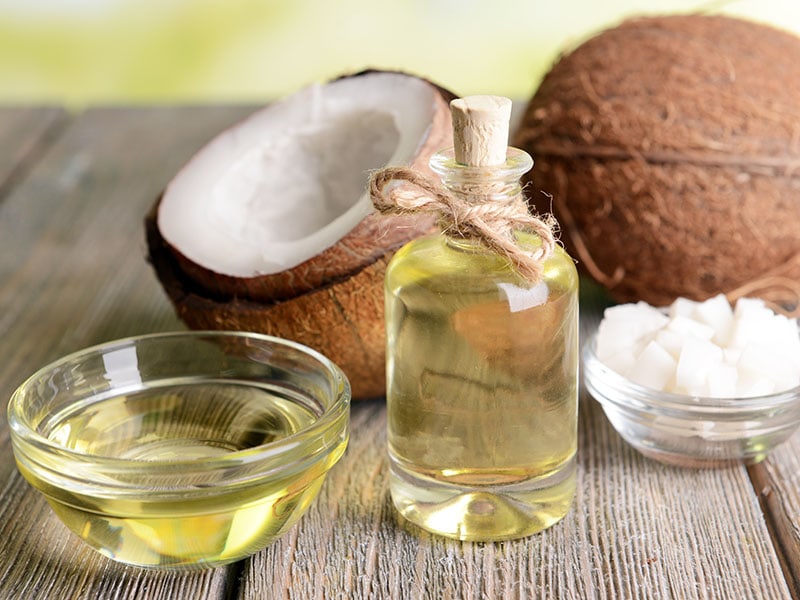
As a bonus, coconut oil can turn your salad into something totally new! The signature taste of virgin coconut oil will add a tropical, sweet, and nutty flavor to any salad. It goes so well with some shredded coconut and tropical fruits!
If you are not all about the coconut flavor, choose the refined type. The taste of refined coconut oil is pretty neutral, with no characteristic coconut flavor or scent. You can add this oil to any salad; it will not affect the taste at all but make your dish better.
Also, some shrimp or grilled tilapia added can make anyone satisfied. Moreover, virgin coconut oil has a high smoke point, and its fat is mainly saturated, so you can safely use it for any type of cooking.
Level up your vinaigrette with the tropical taste of coconut oil!
14. Grapeseed Oil
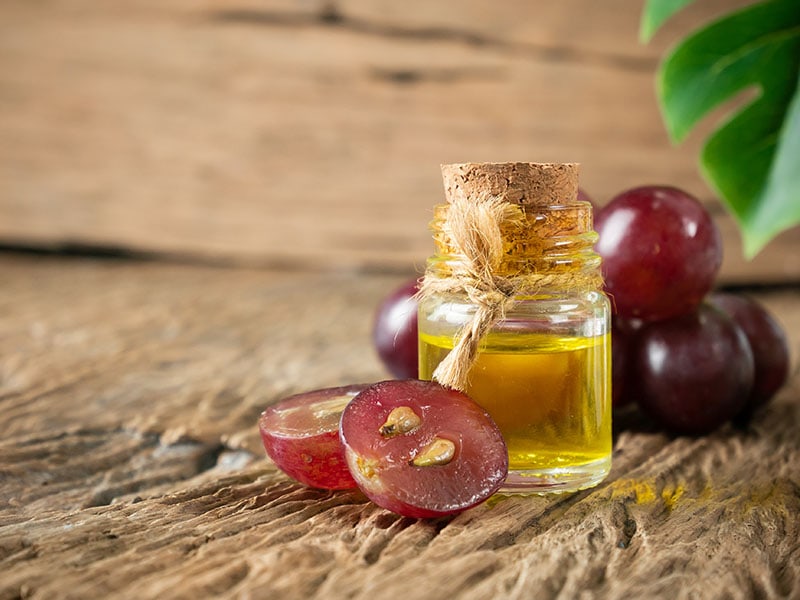
Grapeseed oil is another light flavor vegetable oil that is suitable for salad dressing. This oil is extracted from the seeds of the grape, originating from Europe and the United States.
Compared to the mind and plain refined grapeseed oil, the virgin or expeller-pressed type has a richer flavor which is slightly fruity and nutty. You may also notice some grassy notes.
Furthermore, grapeseed oil is a nutrient-rich salad oil that is almost hypoallergenic. It contains a high vitamin C, vitamin E, and beta-carotene content to contribute to your healthy salad. This oil is also essential for your skin (3).
15. Almond Oil
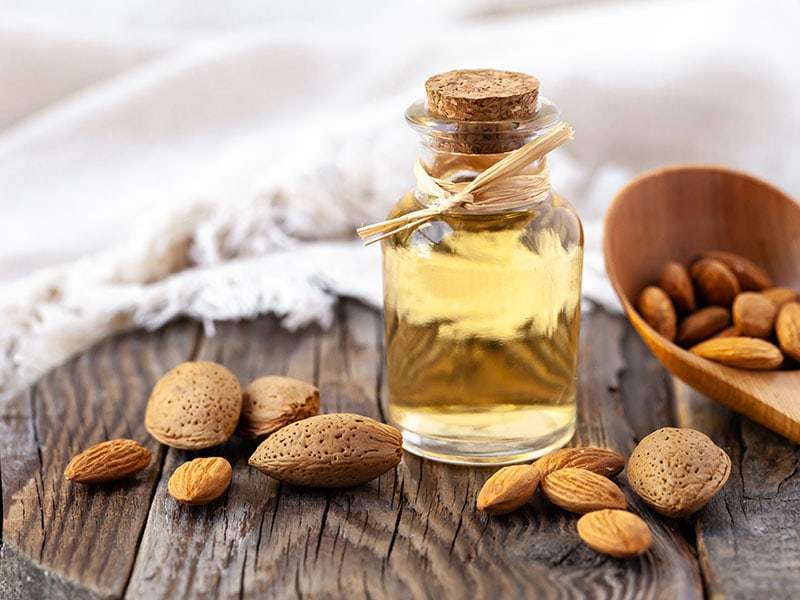
With the specific light sweet and nutty-tasting flavor, almond oil can add a delicate taste to both sweet and savory dishes; among them is many types of salad.
To contribute the monounsaturated fatty acids, vitamin E, potassium, protein, zinc, and many other vitamins and minerals to your diet, just add some drops of almond oil into your salad.
Furthermore, almond oil benefits a lot in the weight loss process by helping the digestive system. It is also considered an extremely important ingredient in most beauty care products.
Salad Oil And Vegetable Oil: What Are The Differences?
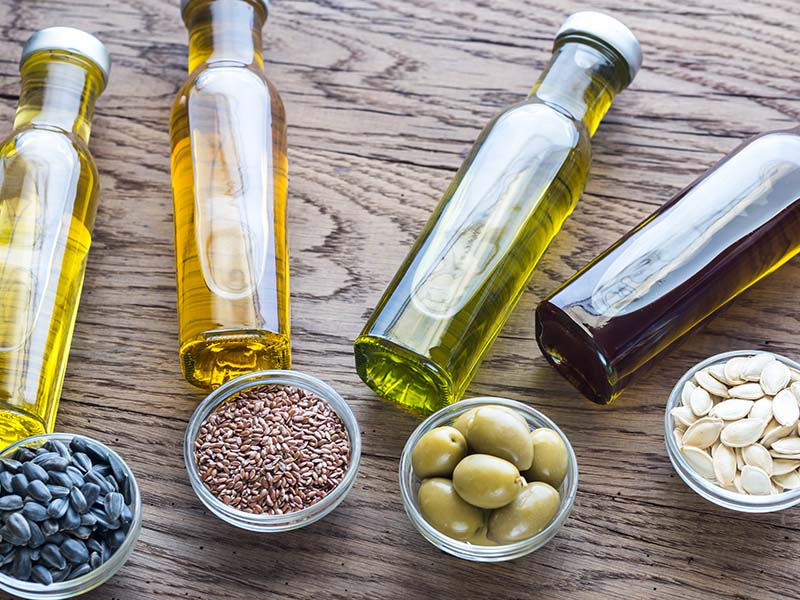
Simply said, salad oil is a term indicating light-tasting vegetable oils, but that is not enough. Although they are barely different, you can still find some characteristics to distinguish them:
First, salad oil can also be vegetable oil and vice versa. They are all made from the same degumming, bleaching, refining, and deodorization process.
However, salad oil can go further through a procedure called fractionation. This process helps salad oil expand its functionality, separating long triglycerides from medium and short triglycerides to shorter ones.
Moreover, unlike vegetable oil, salad oil must not be mixed with any spices, herbs, and other additives to keep the oil’s lightest, mildest, and most neutral flavor.
Besides the taste, the texture of salad oil is also essential. It must have an extremely low viscosity without stickiness to run smoothly when pouring into your salad.
Speaking about the shelf life, vegetable oil can be used from 12 to 18 months and even more if you store it properly. Salad oil does not have such a long lifespan, and it is said to be the oil that will go rancid the fastest of all oils.
And finally, their smoking points are definitely not the same. Vegetable oil is usually used in cooking, so it must have a relatively high smoking point.
On the other hand, you never need to heat your salad, so the smoking point of your salad oil is not so important. However, the surprising thing here is some salad oils have an extremely high smoke point and can be used for cooking purposes as well!
How to Select The Most Suitable Salad Oil
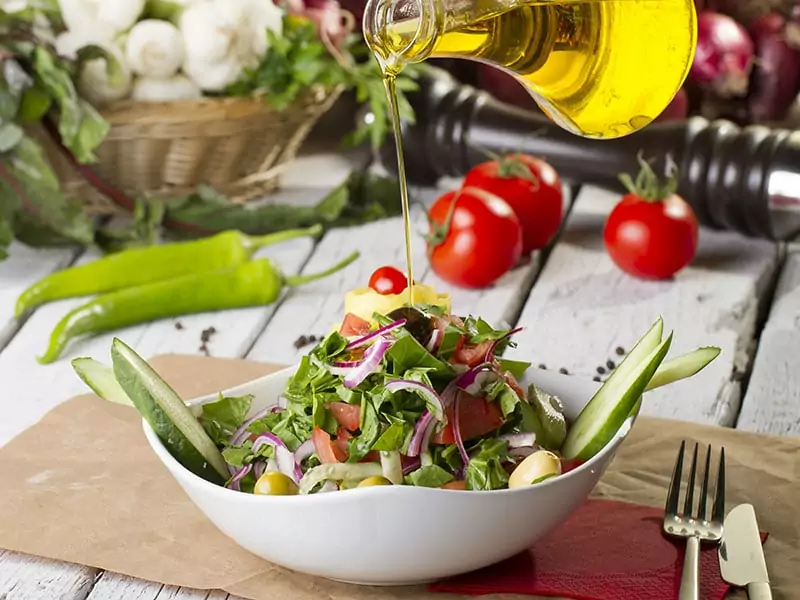
Not every salad oil is suitable for every salad. The choice belongs to your taste and your salad recipe. If you do not want any extra flavor in your salad, avoid the salad oil, which has its signature taste, such as olive oil, coconut oil, and other nut oils.
A neutral flavor can be brought by some tasteless salad oil such as canola and safflower oil. However, you should consider choosing salad oil that will enhance the taste of the corresponding component (walnut oil for walnut salad, etc.)
You can also pay attention to the texture of your salad oil. It must be smooth, not vicious at all, and not contain solid crystals. Therefore, when you preserve your salad in the fridge, it will not become waxy and thick.
Methods to Store Salad Oil Properly
To retain the delicate taste, texture, and nutrition content, it is essential to preserve salad oil in the right way:
- Like any oil, salad oil should not be exposed to air, direct light, or high temperatures.
- Remember to keep your salad oil in a dry, cool, and dark place.
- Keep salad oil far from oxygen and heat, retain the nitrogen to prevent oxidation.
After using it, you must close the lid tightly to keep the oil airtight permanently.
How to Use Salad Oil: Some Handful Tips
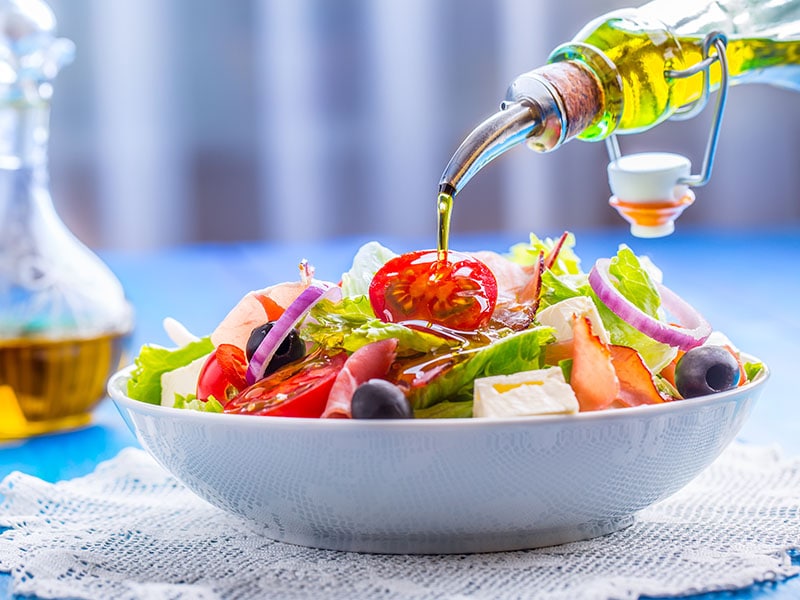
Mayonnaise contains up to 80 percent salad oil to enhance the viscosity, while other salad dressings usually include 30 to 50 percent salad oil in the formula to make the dressing smoother. You should also never forget a formula when making classic vinaigrette: 1 vinegar: 3 salad oil.
To be sure, you should use a salad dressing shaker or a teaspoon to control the amount of salad oil you pour into your salad. Too much oil can cause your salad to be too heavy.
Another excellent tip is to pair your salad oil with the closest ingredients to double the taste effect.
For instance, if you use sunflower oil as a salad oil, choose a salad recipe that contains some sunflower seeds. In case you use coconut oil, some chopped coconut on top will make your salad delish!
Culinary Uses of Salad Oil

You can do many things with salad oil: spoonful and pourable salad dressings, mayonnaise, and vinaigrette. Salad oil will make a coat out of all the salad components, creating a beautiful, attractive, glossy layer.
The smooth and creamy texture of salad oil spreads the flavorful taste of the dressing throughout your salad. The lubrication it brings will provide a better feeling in your mouth, thereby increasing the palatability of the whole salad.
And do you think salad oil can also be used for salad dressing? Yes, this is the primary use of salad oil, but not the only one. Some salad oil can be used for pan frying, griddling, baking, and even deep-frying.
What Can You Use to Substitute Salad Oil?
Aside from oil, what other ingredients can you use as an alternative for salad oil? Scroll down and find out now!
Tahini Salad Dressing
Tahini is a valuable component to use instead of oil in salads. This is also called sesame butter, which appears in many Central Asian and Mediterranean cuisines. This is an indispensable ingredient to make Hummus sauce.
Not only that, but tahini can also be used in many dishes, from making salad dressings, making sauces, dips, or even desserts. It has a mild taste and creamy texture to contribute to your salad with some salty and earthy notes.
Try to dilute your tahini oil with another neutral oil to mimic the salad oil’s fluidity. And for your information, tahini may even be better than salad oil due to its extremely high content of antioxidants, vitamins, and minerals (4).
Nothing can be more excellent than a creamy tahini dressing! This salad is the best option with the full taste combination of creamy tahini and a combination of many fresh greens!
Learn the best way to make the excellent creamy tahini dressing now!
Yogurt Salad Dressing
Another perfect creamy dressing for your salad without salad oil? It is yogurt/Greek yogurt with its signature sour and fatty taste and many health benefits. Traditional Caesar salad will be great, adding yogurt as a dressing, and so does Russian salad.
The easiest yet tastiest yogurt dressing you can make is lemon yogurt dressing! With just some available ingredients always in your cupboard, your salad will be creamier and tastier than ever!
Nut Butter Salad Dressing
Cashew butter, peanut butter, or any nut butter can be used as a salad dressing when combined with other ingredients (apple cider vinegar, miso, orange juice, etc.).
You can try to mix your favorite nutty butter flavor with some orange juice, maple syrup, and apple cider vinegar, or any ingredients you love to create a fantastic salad dressing.
In this case, I suggest you use some almond butter combined with turmeric to create the best spicy and nutty dressing ever! This dressing goes well with any salad, and you can keep it in your fridge for up to 1 week.
Crumble Cheese Salad Dressing
If you do not have any salad oil right now, just use some creamy crumble cheese to substitute it! Blue cheese and all the creamy, crumbly cheeses are also excellent choices for salad dressings, whether they are blue cheese, goat cheese, or feta cheese!
You can use these cheeses to dress every salad and add extra cheesy flavors to them. Just spare your time to crumble the cheese to create a suitable texture. For an additional creamy texture, you can supply some yogurt or buttermilk.
The simplest blue cheese dressing recipe is waiting for you to discover!
Avocado Vinaigrette Salad Dressing
Avocado vinaigrette can make up your tasty salad dressing with a smooth and silky texture. To do that, just blend some slices of avocado softly with some lemon juice and vinegar. You will get your avocado vinaigrette perfect instead of salad oil.
Moreover, avocado vinaigrette has a pretty high-fat content, so all those monounsaturated and polyunsaturated fatty molecules will spread all the flavors fully in your mouth, doubling any greens and spices’ taste in your salad!
FAQs
Are there still some questions about salad oil in your head? Find out now in the informative answers below!
No More Bland Veggies Since You Have Salad Oils!
No longer chewing the bland, dry salad, you can now enjoy all the healthy green with a bit of salad oil! This oil will complete your salad and make it more perfect than ever.
Why not add any kind of salad oil you love into your salads right now and let me know the result in the comment section? Does it enrich the salad flavor and help you enjoy your meals better? If yes, there is nothing to hesitate about, let’s share this post right now!
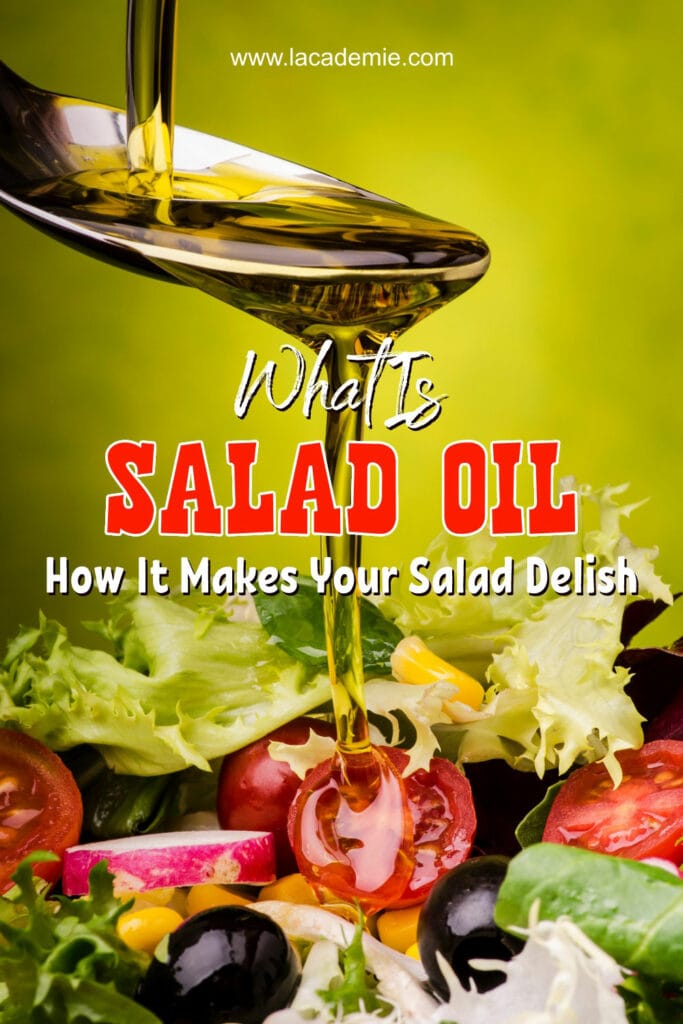
References
- Anon, Top 6 health benefits of Safflower Oil. Medical News Today.
- 2021. [online] Available at: https://fdc.nal.usda.gov/fdc-app.html#/food-details/173573/nutrients
- 2021. [online] Available at: https://fdc.nal.usda.gov/fdc-app.html#/food-details/171028/nutrients
- Medicalnewstoday.com. 2021. Tahini: Nutrition, benefits, diet, and risks.



